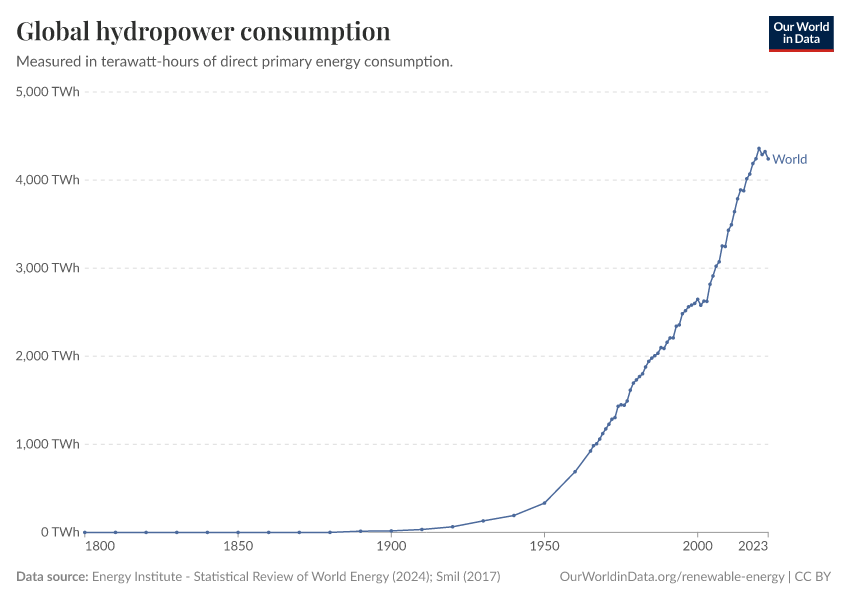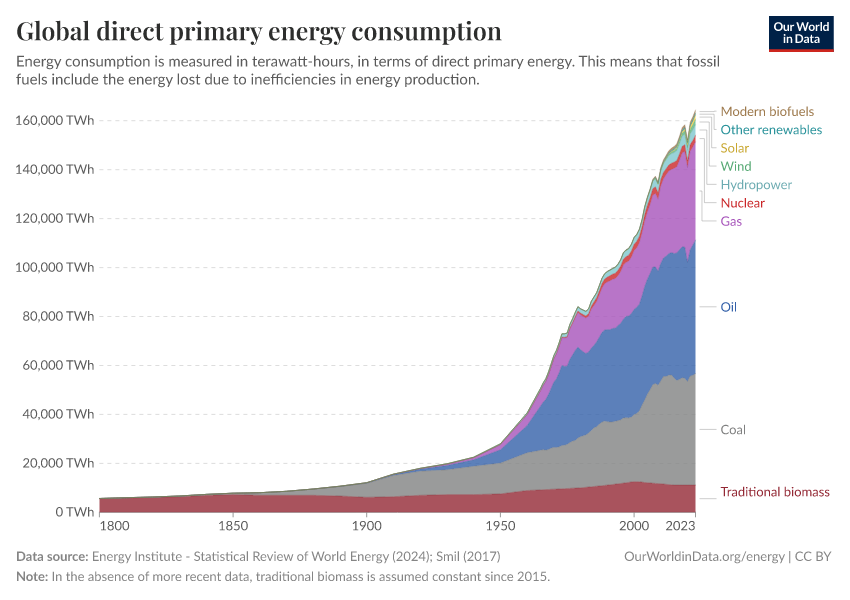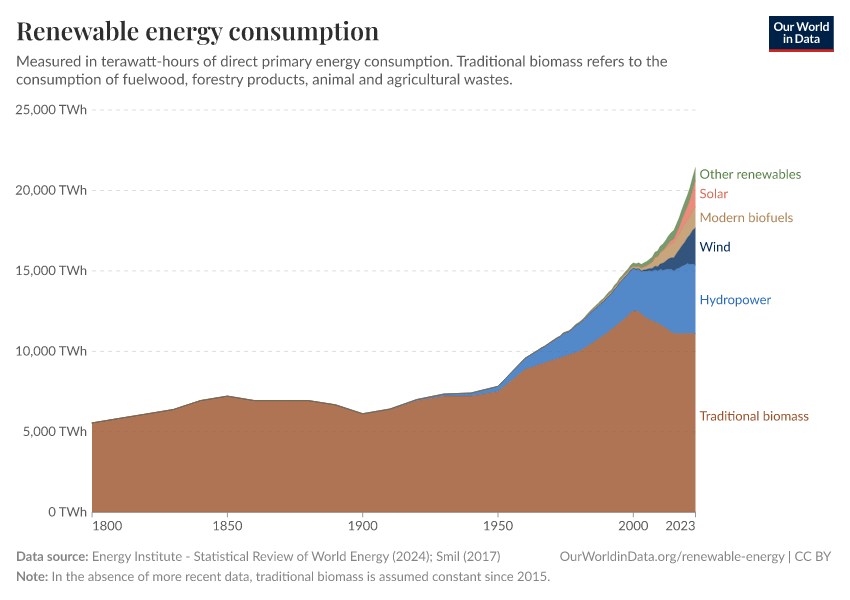Direct primary energy from hydropower

What you should know about this indicator
Primary energy data can be quantified using two different methodologies: (1) 'Direct' primary energy, which directly combines fossil fuel data with the electricity generated by nuclear power and renewables. (2) 'Substituted' primary energy, which converts non-fossil electricity into their 'input equivalents': The amount of primary energy that would be needed if they had the same inefficiencies as fossil fuels. This 'substitution method' is adopted by the Energy Institute's Statistical Review of World Energy, when all data is compared in exajoules.
Sources and processing
This data is based on the following sources
How we process data at Our World in Data
All data and visualizations on Our World in Data rely on data sourced from one or several original data providers. Preparing this original data involves several processing steps. Depending on the data, this can include standardizing country names and world region definitions, converting units, calculating derived indicators such as per capita measures, as well as adding or adapting metadata such as the name or the description given to an indicator.
At the link below you can find a detailed description of the structure of our data pipeline, including links to all the code used to prepare data across Our World in Data.
Notes on our processing step for this indicator
- All data prior to the year 1965 is sourced from Smil (2017). All data from 1965 onwards, with the exception of traditional biomass is sourced from the Energy Institute Statistical Review of World Energy. Smil's estimates of traditional biomass are only available until 2015. For the years 2016 onwards, we have assumed a similar level of traditional biomass consumption. This is approximately in line with recent trends in traditional biomass from Smil's data.
- We convert all data from the Statistical Review of World Energy from exajoules (EJ) to terawatt-hours (TWh), using a conversion factor of 1,000,000 / 3,600 (~277.778).
Reuse this work
- All data produced by third-party providers and made available by Our World in Data are subject to the license terms from the original providers. Our work would not be possible without the data providers we rely on, so we ask you to always cite them appropriately (see below). This is crucial to allow data providers to continue doing their work, enhancing, maintaining and updating valuable data.
- All data, visualizations, and code produced by Our World in Data are completely open access under the Creative Commons BY license. You have the permission to use, distribute, and reproduce these in any medium, provided the source and authors are credited.
Citations
How to cite this page
To cite this page overall, including any descriptions, FAQs or explanations of the data authored by Our World in Data, please use the following citation:
“Data Page: Direct primary energy from hydropower”, part of the following publication: Hannah Ritchie, Pablo Rosado and Max Roser (2023) - “Energy”. Data adapted from Energy Institute, Smil. Retrieved from https://ourworldindata.org/grapher/global-hydro-consumption [online resource]How to cite this data
In-line citationIf you have limited space (e.g. in data visualizations), you can use this abbreviated in-line citation:
Energy Institute - Statistical Review of World Energy (2024); Smil (2017) – with major processing by Our World in DataFull citation
Energy Institute - Statistical Review of World Energy (2024); Smil (2017) – with major processing by Our World in Data. “Direct primary energy from hydropower” [dataset]. Energy Institute, “Statistical Review of World Energy”; Smil, “Energy Transitions: Global and National Perspectives” [original data]. Retrieved March 10, 2025 from https://ourworldindata.org/grapher/global-hydro-consumption
